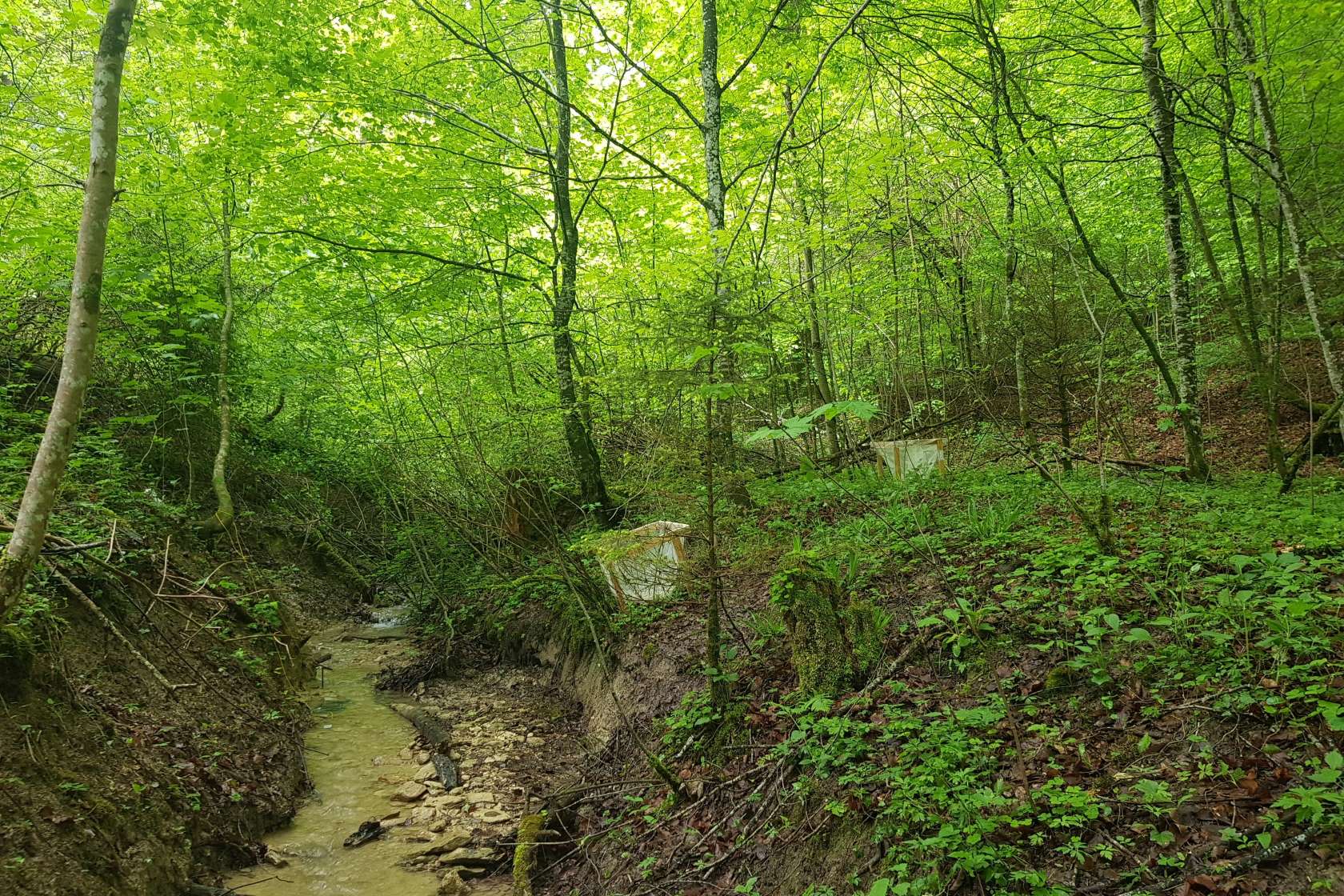Seasonal dynamics of detritus across ecosystems
Leaves Fall in Autumn, Decomposition Lasts All Year – New Study in Current Biology

A new study led by Dr. Eva Cereghetti, PhD, from the research group of Prof. Florian Altermatt has been published in Current Biology, a leading journal in the field of ecology.
In nature, living organisms and dead organic material often move between ecosystems, and these transfers can vary significantly with the seasons. For example, leaves from forest trees often fall into nearby streams, especially in autumn when most leaves are shed over a short period.
This study examined how dead leaf litter moves from forests to streams throughout the year and how quickly it decomposes in each ecosystem. The researchers tracked the seasonal dynamics of two types of leaf litter—labile, which decomposes more easily, and recalcitrant, which is tougher and decomposes more slowly—over the course of a year in a field experiment.
They found that while most leaves fell in autumn, smaller amounts continued to enter streams all year long. Labile leaves decomposed faster during warmer months, especially in summer, while recalcitrant leaves decomposed at a slower but steadier rate regardless of the season. Microorganisms such as fungi and bacteria were the main drivers of decomposition in both forest and stream ecosystems.
These findings highlight that although leaf litter largely becomes available at once in autumn, decomposition rates can change unequally across the seasons for different litter types. Their work further suggests that that the presence of slow-decomposing recalcitrant litter could help buffer ecosystems against sudden shifts in resource availability. Understanding these patterns is crucial for predicting how ecosystems may respond as climate change alters environmental conditions and seasonal cycles.
A short video has also been produced to visually present the research and its broader ecological context:
Watch on YouTube




